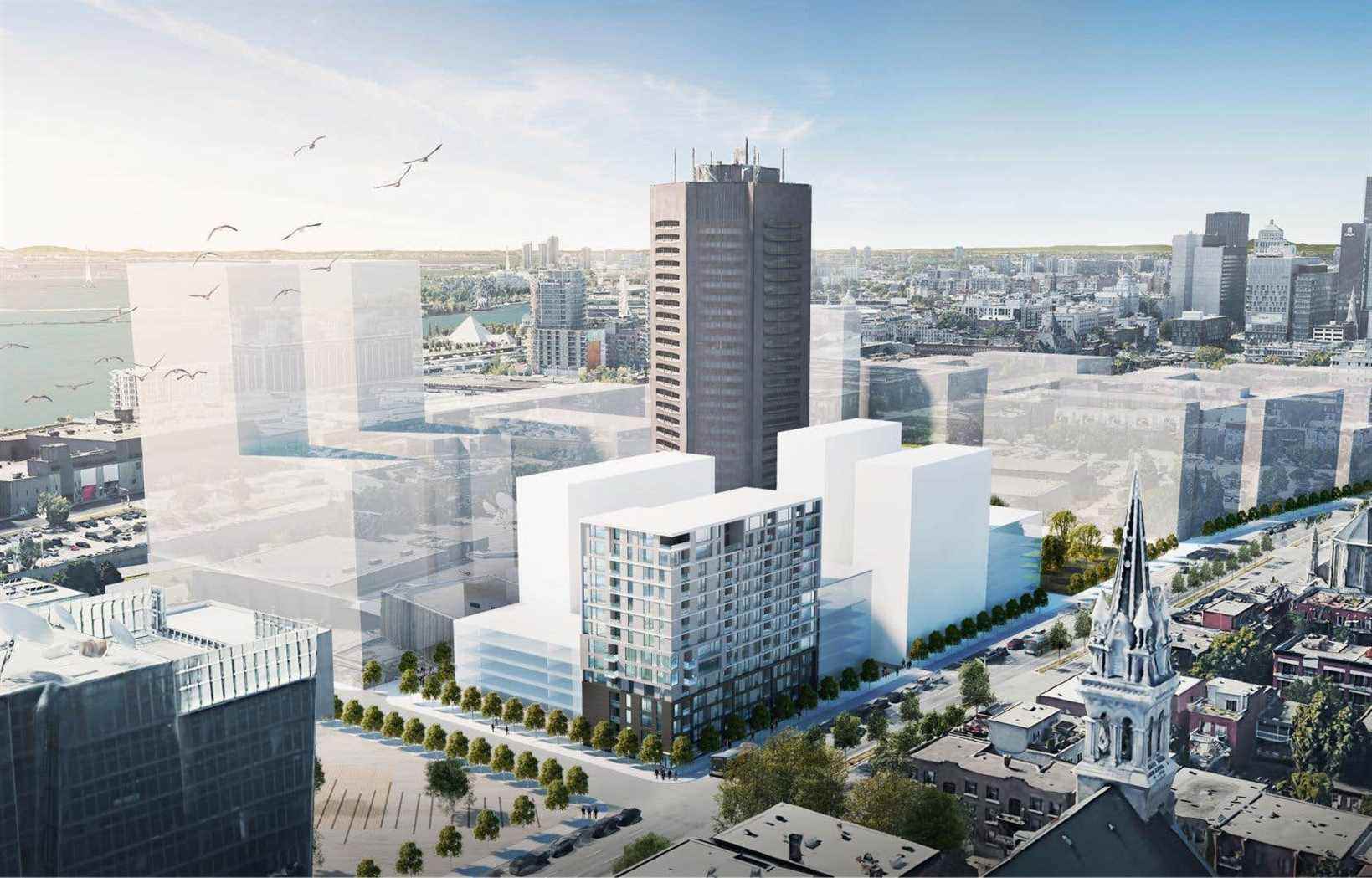This text is part of the special section The great builders
Thanks to its strategic geographical position and the momentum for urban revitalization that it is experiencing at a time when the redevelopment of large sites – Molson Coors Brewery, Maison de Radio-Canada – makes it possible to dream of many possibilities, the district of Faubourgs presents all the ingredients to become a major attractive center. The actors in the field find it all the more difficult to explain that a limitation of floor area – to 750 m2 – imposed by the concordance regulation of the new PPU threatens this potential.
“If we limit the floor area, necessarily, we limit the number of housing units, and consequently, there will be a more expensive construction cost. This undermines affordability, even though the City says that it is a problem it wants to solve, ”notes Jean-Marc Fournier, CEO of the Urban Development Institute of Quebec (IDU), an independent, non-profit organization.
Mentioned and then withdrawn from the Faubourgs Special Urban Planning Program (PPU), the provision unanimously criticized by all stakeholders in the field in the briefs submitted during the consultative process has nevertheless reappeared in the concordance regulation of said PPU adopted by the borough of Ville-Marie.
“In the PPU, what is targeted is to have greater residential density. We are therefore surprised that the concordance regulation does exactly the opposite, because it limits residential capacity. […] It is contradictory to recognize that there is a shortage of housing, to want there to be more and then to impose a regulatory constraint that limits the number, ”continues Mr. Fournier, recalling that, in doing so , this regulation goes against the recommendations of the OCPM in this matter.
This feeling is shared by real estate developer Groupe Mach, designer of the future Lumières district which will replace the former Maison de Radio-Canada site in the area. “The City is trying to promote affordable housing […] but at the same time, by making those kinds of decisions, you end up increasing the cost, by a minimum of 25% per square foot built. What is ironic is that this in no way guarantees that the architectural quality will be better, ”explains Daniel Arbor, vice-president of Groupe Mach, noting in passing that one of the consequences of limiting floor areas is to make projects less ecological, in particular by reducing their energy efficiency.
A regulation that opens the door to exemptions
Two options, each with their own setbacks, will henceforth be available to promoters. “They will probably [aller en dérogation], which – in addition to adding costs – will delay construction projects by around two years, if all goes well. On the other hand, if the promoters decided to go with the 750 m2, they will make housing that will go at the high end of the real estate stock, not in affordable housing. In this sense, it will further accentuate the upward trend in prices, whether for rents or condos. And that also raises the question of social housing, ”emphasizes Mr. Arbor.
It is contradictory to recognize that there is a shortage of housing, to want there to be more and then, to impose a regulatory constraint that limits the number.
While the Interloge charity – which aims to bring social and affordable housing to low-income families in Ville-Marie – has worried about the consequences of limiting floor space, its fears have since been allayed by the city. “As an NPO, Interloge was assured that there would be exemptions for our projects which include family housing, to have larger floor areas. Of course, going in derogation creates additional delays, but we also understand that the City wants to give itself the means to catch projects in order to be able to negotiate with the promoters of settlements that are socially acceptable ”, indicates Louis. -Philippe Myre, Managing Director of Interloge.
City’s response
The City of Montreal declined our interview request, but explained by email that “from the first version of the PPU des Faubourgs, the provision allowed social housing projects to derogate from this provision. […] and that this is still the case with the second version which no longer mentions a maximum floor area set at 750 m2. This maximum floor area provision now applies in accordance with the regulations. From now on, not only a social housing project can derogate from this provision, but also any other project which, within the framework of a particular project of construction, modification or occupation of a building, demonstrates its low impact on the quality of the public domain ”, writes Hugo Bourgoin, media relations officer.
For Jean-Marc Fournier of the IDU, the fact that the City encourages, in reaction to the concerns of the community, to resort to the exemption, does not constitute an answer. “The derogation becomes an arbitrary rule, whereas we should have a predictable rule. We should know what standards are adopted and ensure that they are respected because they are clear. In this case, if the regulation is made to derogate from it, then it is not, ”he concludes.
